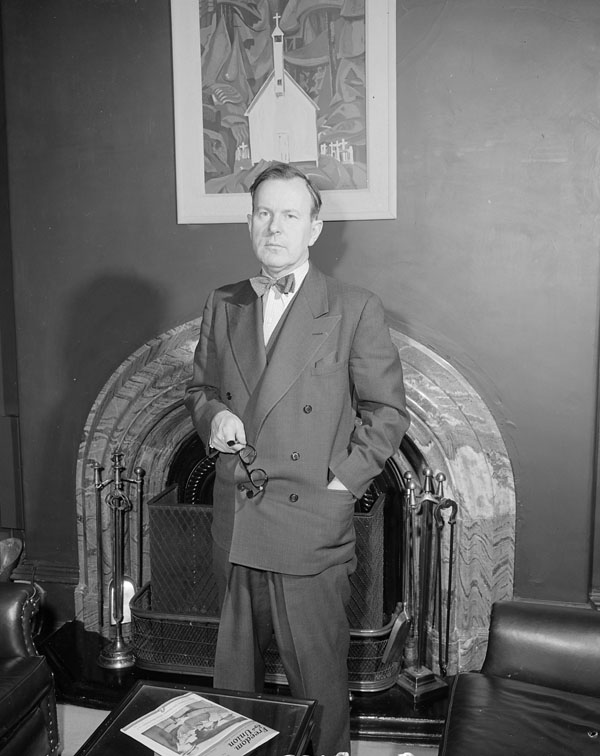Lester Bowles Pearson
1897-1972
Pearson was Prime Minister from 1963 to 1968. His government introduced a new Canadian flag, universal medicare and the Canada Pension Plan. In 1957, as Secretary of State for External Affairs, Pearson won the Nobel Peace Prize for his efforts in establishing a United Nations peacekeeping force in the Middle East.
Pearson moved into 245 Augusta St. upon his return from Washington and lived here between 1946 and 1954 with his wife Maryon (their children were away at university). A stucco-clad brick house featuring steep gables and Gothic revival architecture, this house is representative of the early development of Sandy Hill at the time of Confederation. The Rev. Thomas Bedford Jones, first rector of St Alban’s Church (Daly Ave. at King Edward Ave.), lived here between 1874 and 1882. A British reporter described it as an “old villa with clumsy gables and early Edwardian plumbing in a district of decaying gentility”. (English, 1992) In 1955, the Pearsons moved to 231 Cobourg, a duplex Maryon had bought at the corner of Wilbrod St. This is where he lived when he won the Nobel Peace Prize for organizing a United Nations emergency force to resolve the Suez Canal crisis. In 1958, as Leader of the Opposition, he earned the right to live in Stornaway, the government-supplied residence in Rockcliffe.
In the early 1930s, Pearson and his young family had lived for a short time at 20 Russell Ave. Almost 20 years later, in a letter to his daughter Patsy as she turned 21, Pearson would remember wistfully how she “used to play in the sand pile in the little yard on Russell Ave.” (English, 1989)

Pearson was over 50 when he entered politics in 1948 and won his first election (the first of eight) as MP for Algoma East. He was unassuming, had a quick and often self-deprecating wit, an easy manner and was a good raconteur. In his memoirs, he recounts how he was trying to impress the local folk in his riding by boasting that he had signed the NATO treaty on Canada’s behalf when a voter reminded him that “Yes, that was a fine thing you did down there in Washington, a fine thing for Canada, but it won’t help you much around here if you don’t get us a new post office”. (Munro et al, 1973)
While he lived on Augusta, Pearson’s diplomacy changed the way the world saw Canada. First as a senior bureaucrat and then as minister, Pearson was kept busy with many hot foreign affairs files ranging from the Berlin blockade by the Soviets (with the threat of an imminent European war), the Korean War and the creation of both NATO and the Commonwealth. In 1952, Pearson was offered the position of NATO’s first Secretary General (he turned it down); he had also presided over the UN General Assembly in the Fall and had been considered for the post of UN Secretary General.
Although the international stakes could be very high, communications then were still primitive. When North Korea invaded the South in 1950, Pearson was at his cottage and had no phone. His assistant had to drive from Ottawa to give him the news and then drive him to the nearest general store with a public phone so that he could call the Prime Minister to develop Canada’s position.
